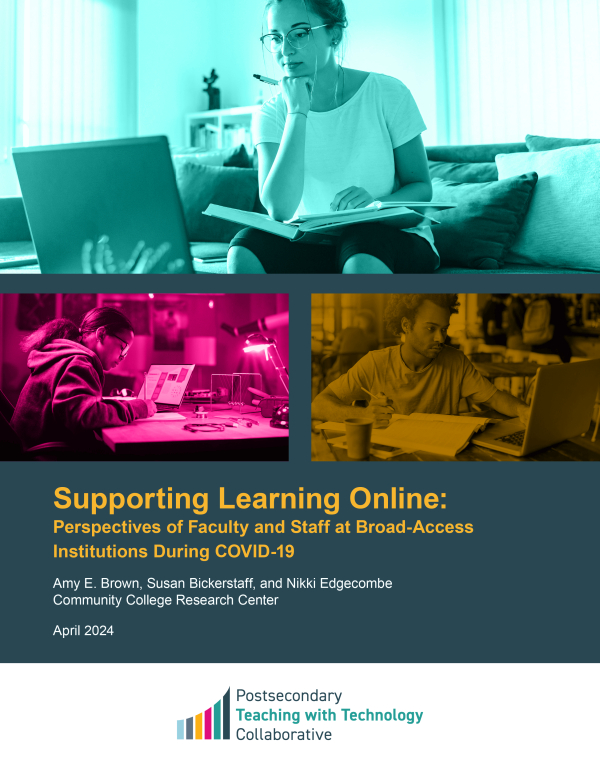
This Postsecondary Teaching with Technology Collaborative (the Collaborative) report examines how faculty and staff at seven community colleges and two broad-access universities reconsidered students’ online learning needs in the midst of the pandemic. The report focuses on a set of interconnected student mindsets and competencies that the authors call self-directed learning (SDL) skills; in their framing, SDL skills include motivational processes (e.g., building self-efficacy and sense of belonging), metacognitive processes (e.g., identifying and adjusting learning strategies and reflecting), and applied learning processes (e.g., managing time and seeking help). The authors explore whether and how the colleges offered supports for students to strengthen their SDL skills and the extent to which SDL skill supports were offered within online courses versus outside of class.
Findings from interview data and secondary sources show that most institutions made changes to improve conditions for online teaching and learning, including improved use of learning management systems, increased professional development for instructors, improved physical technology infrastructure and expanded software licenses, and the development of student-facing online orientation materials. At the same time, increased use of online courses continued to present challenges, including poorer student performance in online course sections, lack of meaningful communication and engagement, lower likelihood for online students to seek help when they need it, and increased demands for students to apply SDL skills such as time and task management. Moreover, many SDL supports occurred at the institution level and therefore were not tailored to particular content areas or course types. These supports provided students with valuable and needed resources to help them succeed in college but also had some limitations. Finally, while most faculty and staff the authors interviewed expressed that SDL skills are important and should be supported by the institution, explicit instructional support for SDL skills inside classrooms appeared to be limited and uneven; faculty may not know how to teach these skills, may not think that they have the time or resources to do so, or may not see it as their responsibility. The report concludes with three recommendations for institutions to promote SDL skill development.
A Collaborative report on teaching and designing online STEM courses to support SDL skills is also available.
